If I could only have one sauce for the rest of my life, the answer would be basil pesto sauce. Hands down! This easy pesto sauce recipe is my go-to for everything from pasta, chicken, fish and meats to salads, dips and spreads.
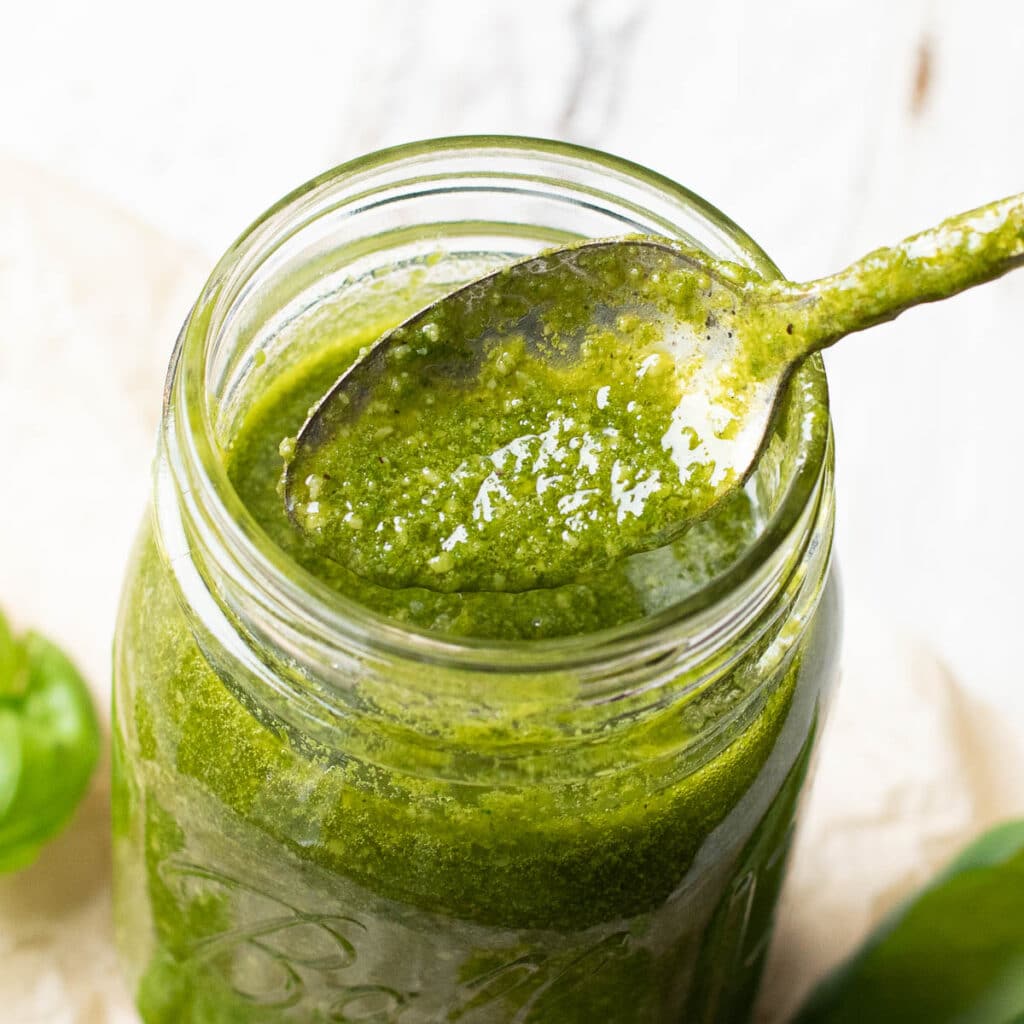
This delicious sauce is salty, garlicky and herby all at once, and it’s one of the most loved recipes I make. This pesto truly makes everything the best-o!
Why is this pesto sauce recipe the best pesto sauce recipe?
This simple recipe for pesto sauce comes straight from old Italian West Philly. It remains unchanged through at least 3 generations, because it doesn’t need changing! I take no credit for it’s creation but it’s freaking perfect and I can honestly say that I’ve never had better.
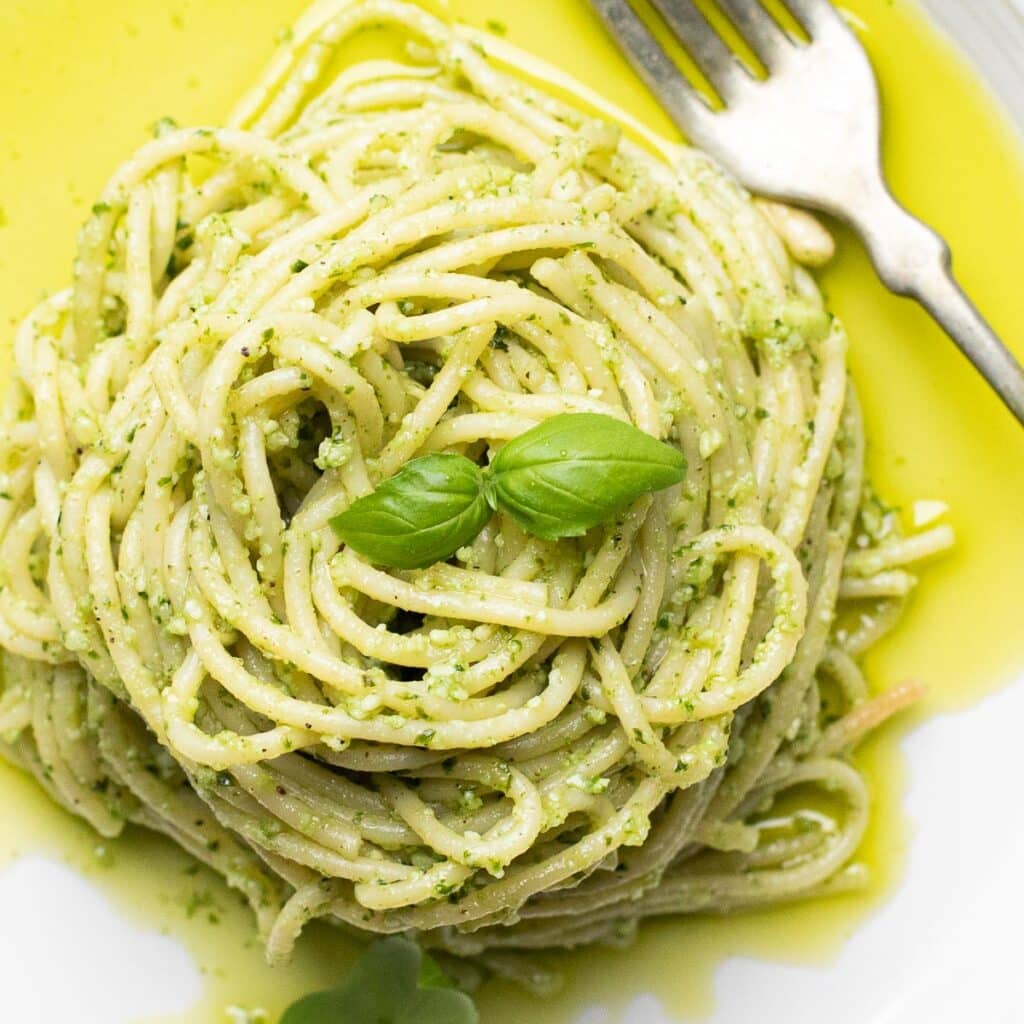
Back story: I grew up visiting my grandparents every weekend in West Philadelphia. Their neighborhood was a 50/50 split of Italian and Jewish. There was no in-between. Their front doors were always open and the neighbors passed in and out of each other’s homes on the regular.
My grandmother shared her recipes for matzo ball soup and brisket with her Italian neighbors, and they shared their pasta recipes with her.
This homemade pesto recipe is in my blood, and also in my kids’. In fact, some of both my kids’ first words were “pesto pasta”. I swear it’s true. We literally live on the stuff.
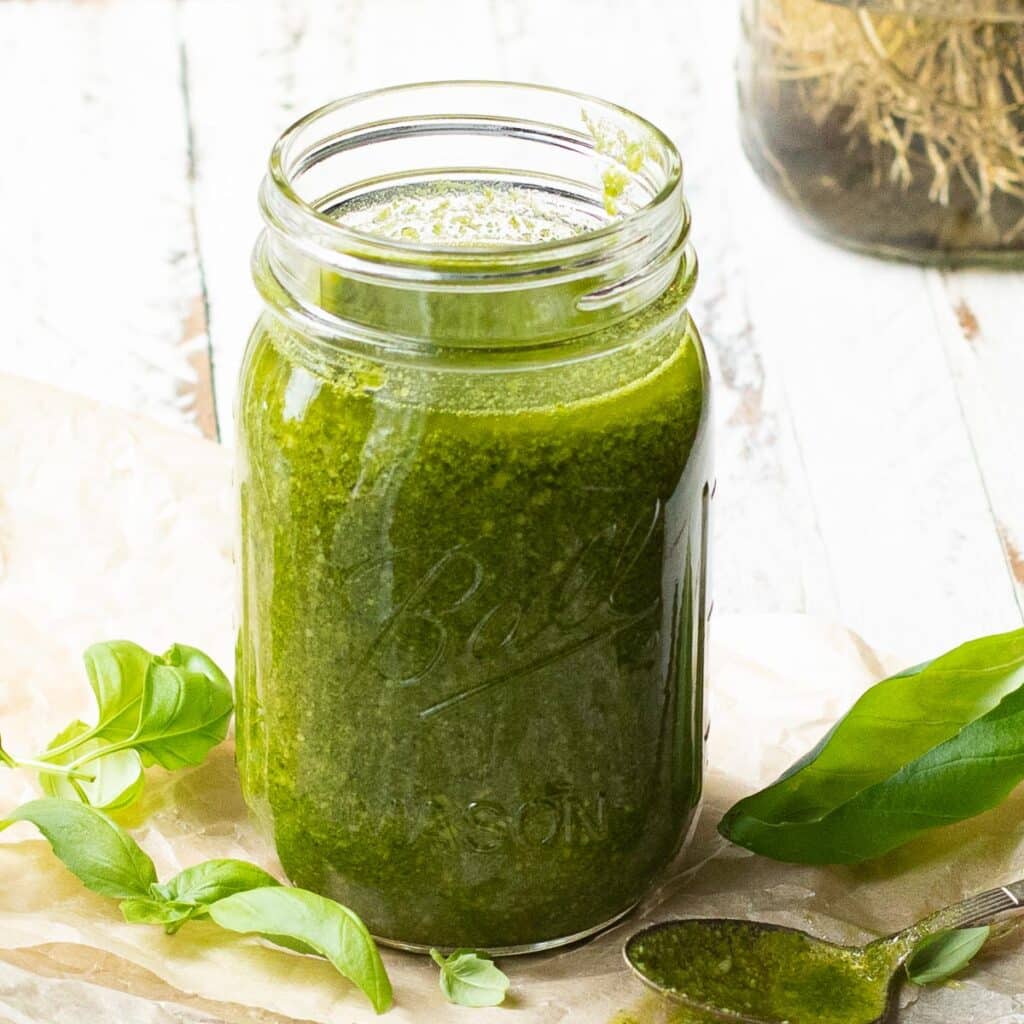
What is pesto?
Pesto is a classic Italian sauce made from fresh basil leaves, garlic, aged hard cheese and quality olive oil. It doesn’t require any cooking to prepare!
Pesto was originally made by crushing the ingredients together with a mortar and pestle. These days, everything goes into a blender or food processor, and the sauce is ready in just minutes.
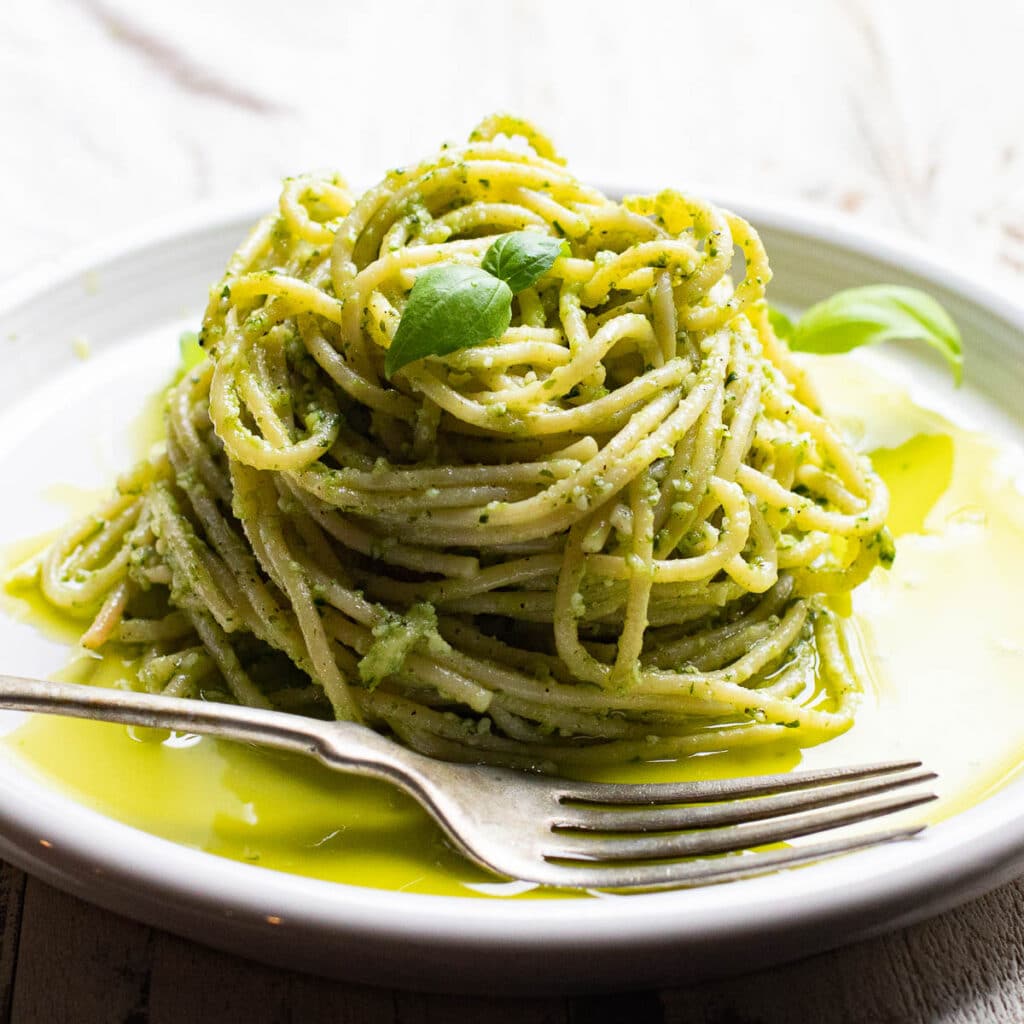
What’s in this homemade pesto sauce recipe
Here is what you’ll need to make this classic basil pesto recipe:
- Fresh basil leaves
- Aged Parmesan cheese. Pecorino Romano is a good substitute, if needed.
- Garlic cloves
- Quality extra-virgin olive oil
- Pine nuts
- Salt
- Pepper
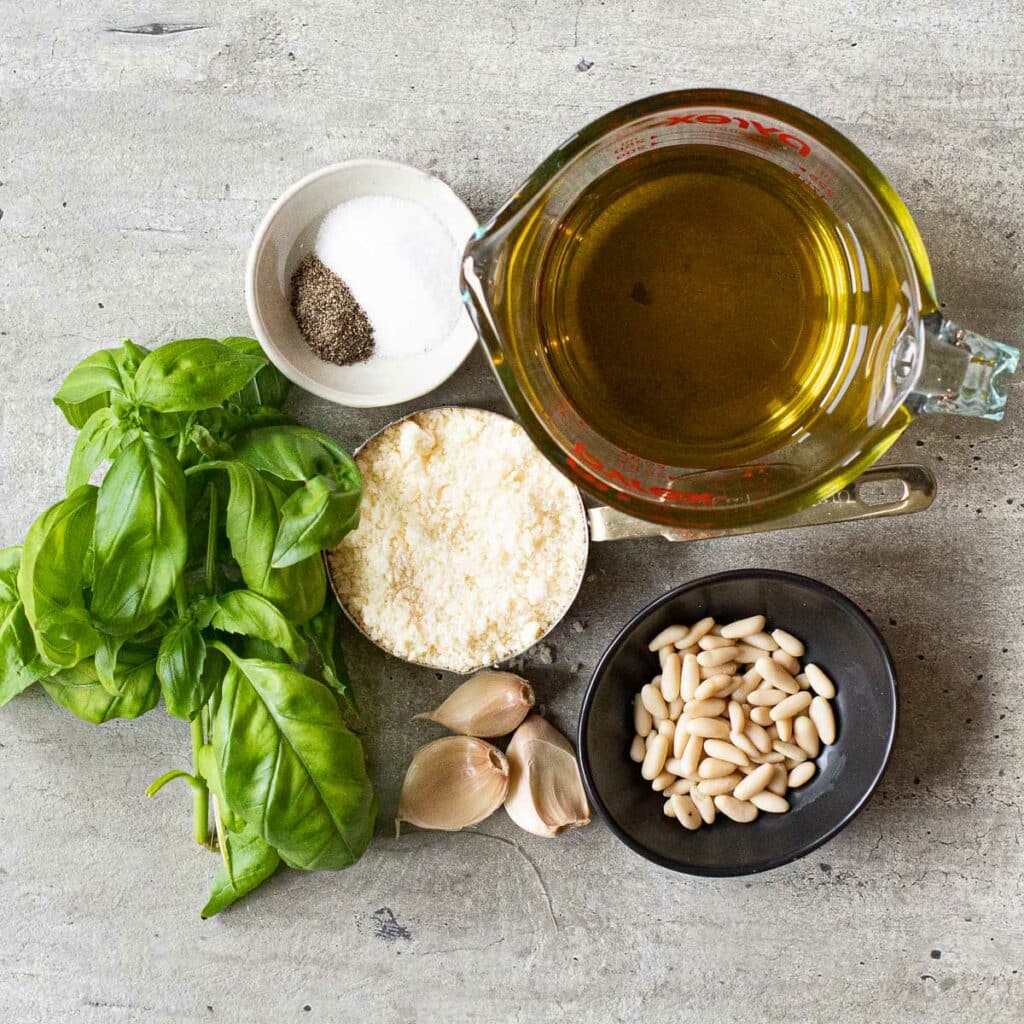
How to make your own pesto sauce
All you’ll need to make this sauce is a blender or food processor. I would tell you to process everything in the blender and then pour the oil in a steady stream while the motor is running, but you don’t even need to do that.
There are no acidic ingredients like vinegar or lemon juice in this recipe, so you don’t need to emulsify the oil. Literally dump all of the ingredients into the blender and puree until the mixture is smooth. Done and done.
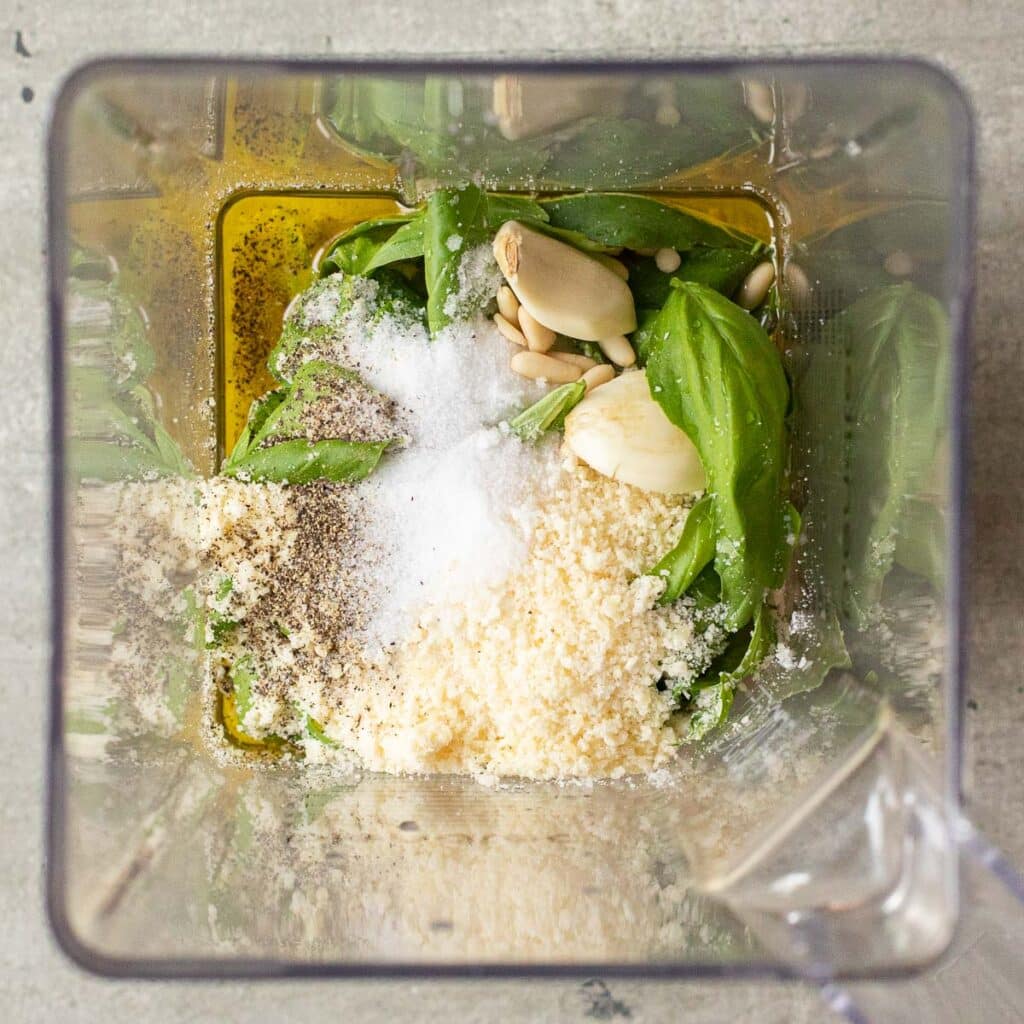
The Millions of Uses for Pesto Sauce
While pasta is the most obvious use for pesto sauce, there are so many other ways to enjoy it! Here are some of my favorite things to do with pesto sauce:
- Instead of red sauce, use pesto sauce in stromboli and calzones. Try these Sausage & Pesto Calzones.
- Add pesto sauce to traditional stuffed shells for a flavor explosion! Try these Pesto Ricotta Stuffed Shells.
- Make pesto butter to spread on baguettes. Try this Pesto & Roasted Tomato Butter Board.
- Make a cold pesto pasta salad like this Bowtie Pesto Pasta Salad.
- Combine pesto with cream cheese and sun dried tomatoes, like in this delicious Sun Dried Tomato & Pesto Torte.
- Toss pesto with cooked shredded chicken breast and serve it as an appetizer, like in these Polenta Rounds with Pesto Chicken & Roasted Red Peppers.
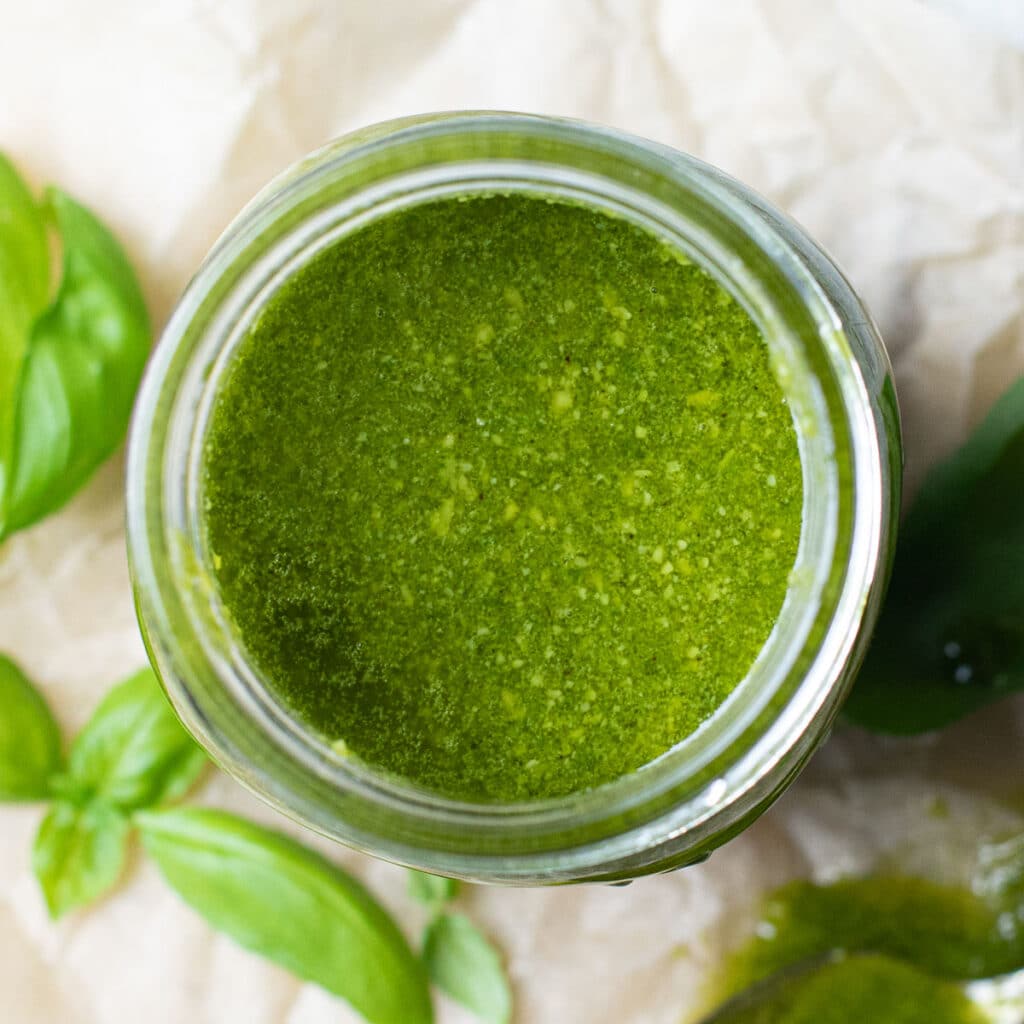
Modifications for Nut and Dairy Allergies
Can you make this pesto sauce recipe without pine nuts?
I run out of pine nuts like, all the time. I don’t fret and neither should you. Just leave them out. The flavor of this pesto sauce will be just fine.
Can you substitute other kinds of nuts for pine nuts in a pesto recipe?
If you want to try other kinds of nuts, walnuts and pistachios are popular choices. Use them in the same amounts as noted in the recipe card.
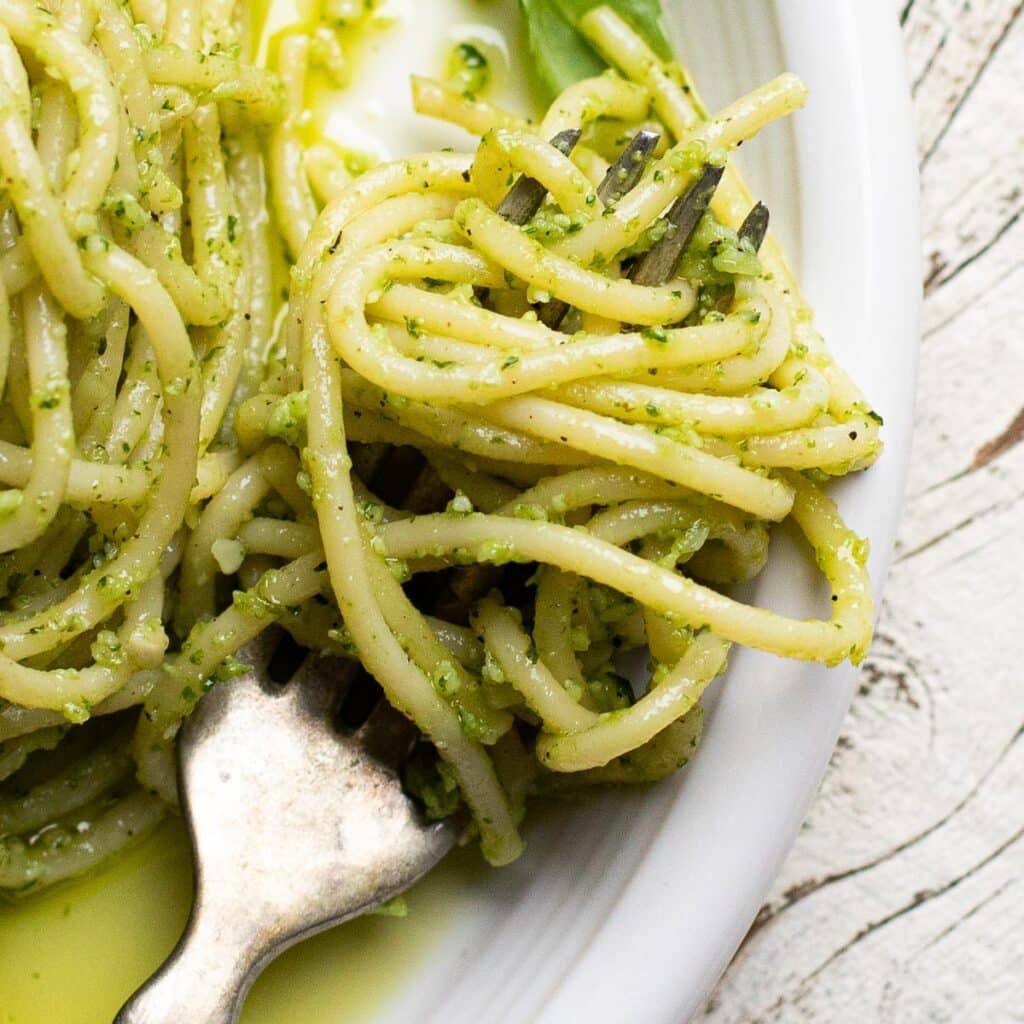
Can you make pesto sauce without cheese?
It might surprise you, but you can omit the cheese in this recipe without sacrificing the overall experience of pesto sauce. It will still be plenty garlicky and herby.
I learned this when the Big Guy was going through his dairy free phase. It was short lived, but we did enjoy dairy free pesto during that time.
What kinds of cheese can you use in pesto sauce?
A hard, aged cheese like Parmesan or Pecorino Romano is perfect for using in pesto sauce. You could also try Asiago or Grana Padano.
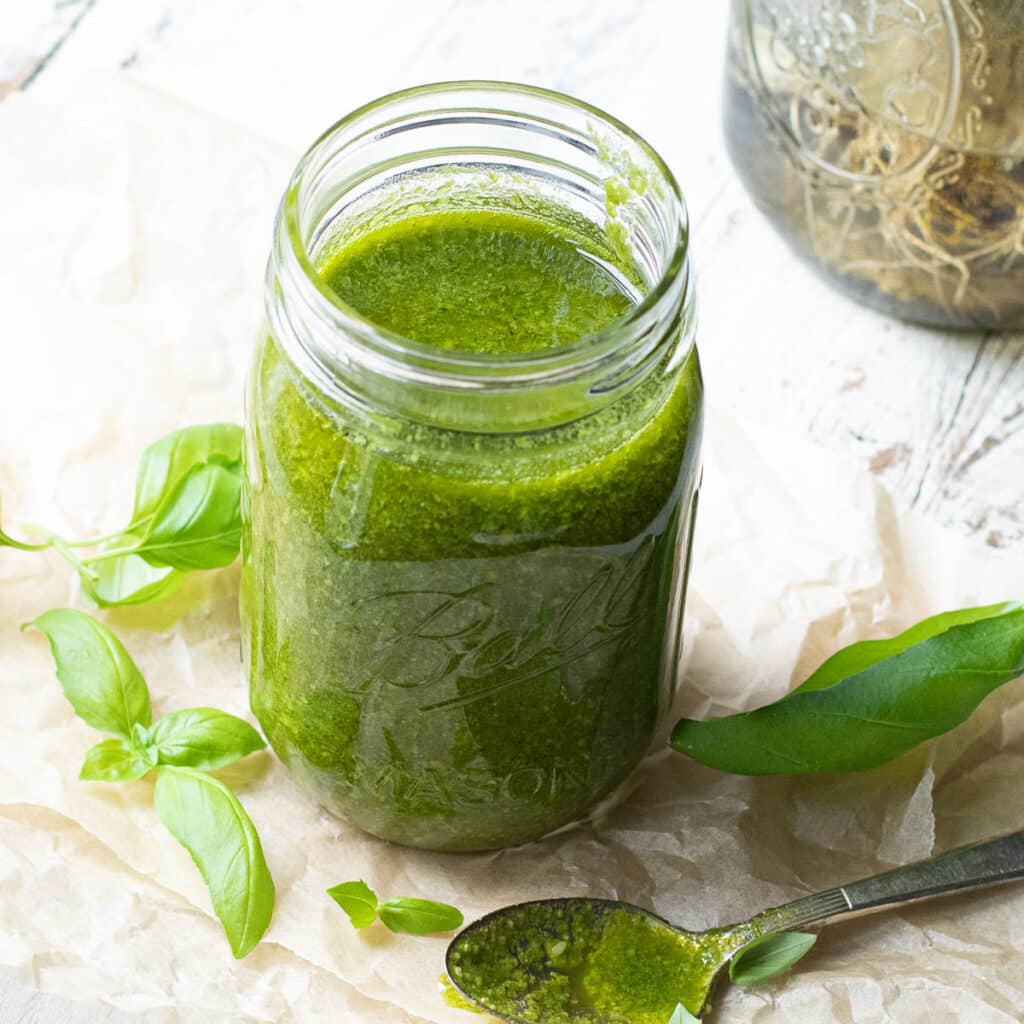
How to Store Pesto Sauce
There are several good ways to store pesto sauce, depending on how and when you want to enjoy it.
Storing pesto sauce in the refrigerator
Short term, it’s best to store pesto in an airtight container in the refrigerator. Some people like to pour a thin layer of olive oil on top of the pesto sauce before sealing it in the container. I have found that this is not a necessary step with a good pesto sauce.
Just pour the sauce into a container and seal it tightly. It should last several weeks in the refrigerator.
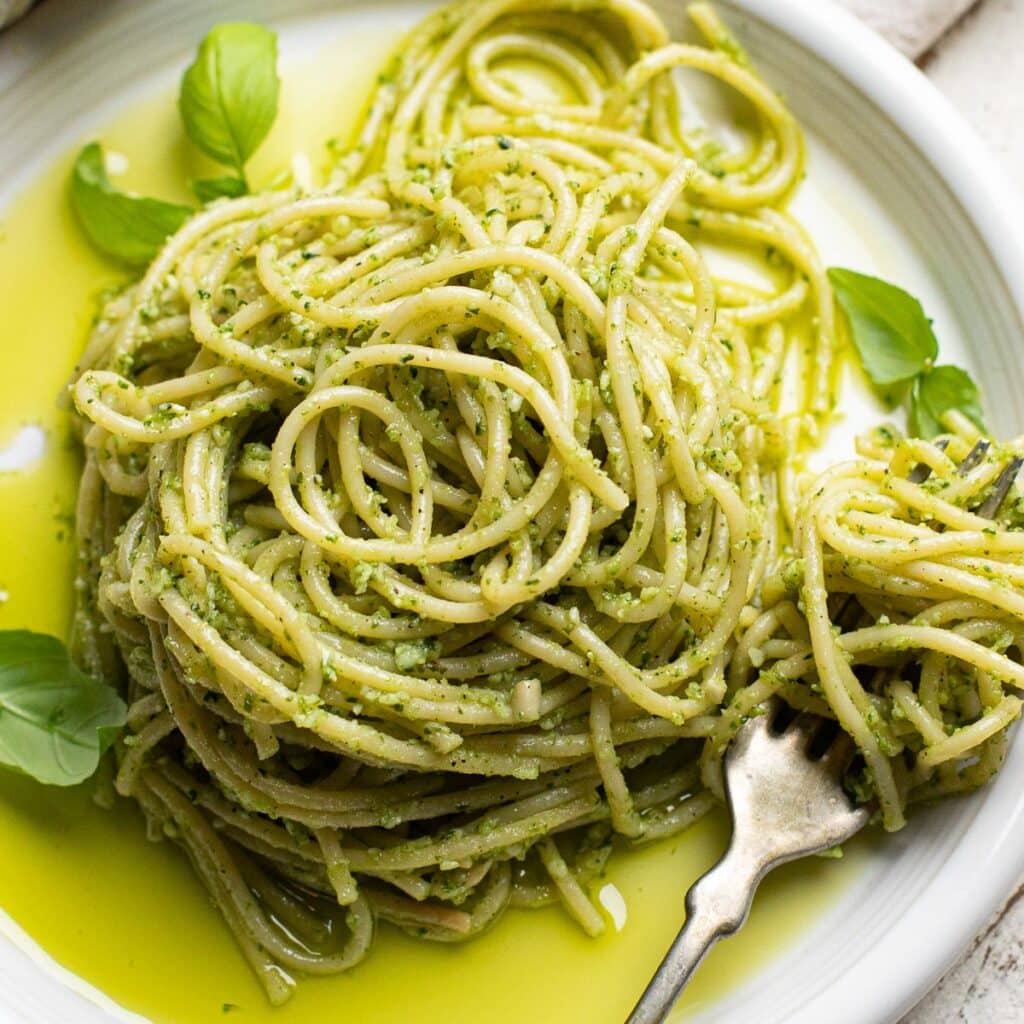
Storing pesto sauce in the freezer
If you’re like me, you’ve got fresh herbs growing out the wazoo in the summer. My basil plant grows so high and full that I end up making batches of pesto sauce and stockpiling them in the freezer.
The best way to freeze pesto is in a large freezer bag. Fill the freezer bag with pesto, squeeze the air out of it, and lay it flat in the freezer. It takes up very little space, and you can go into the bag for a scoop or two any time you need to.
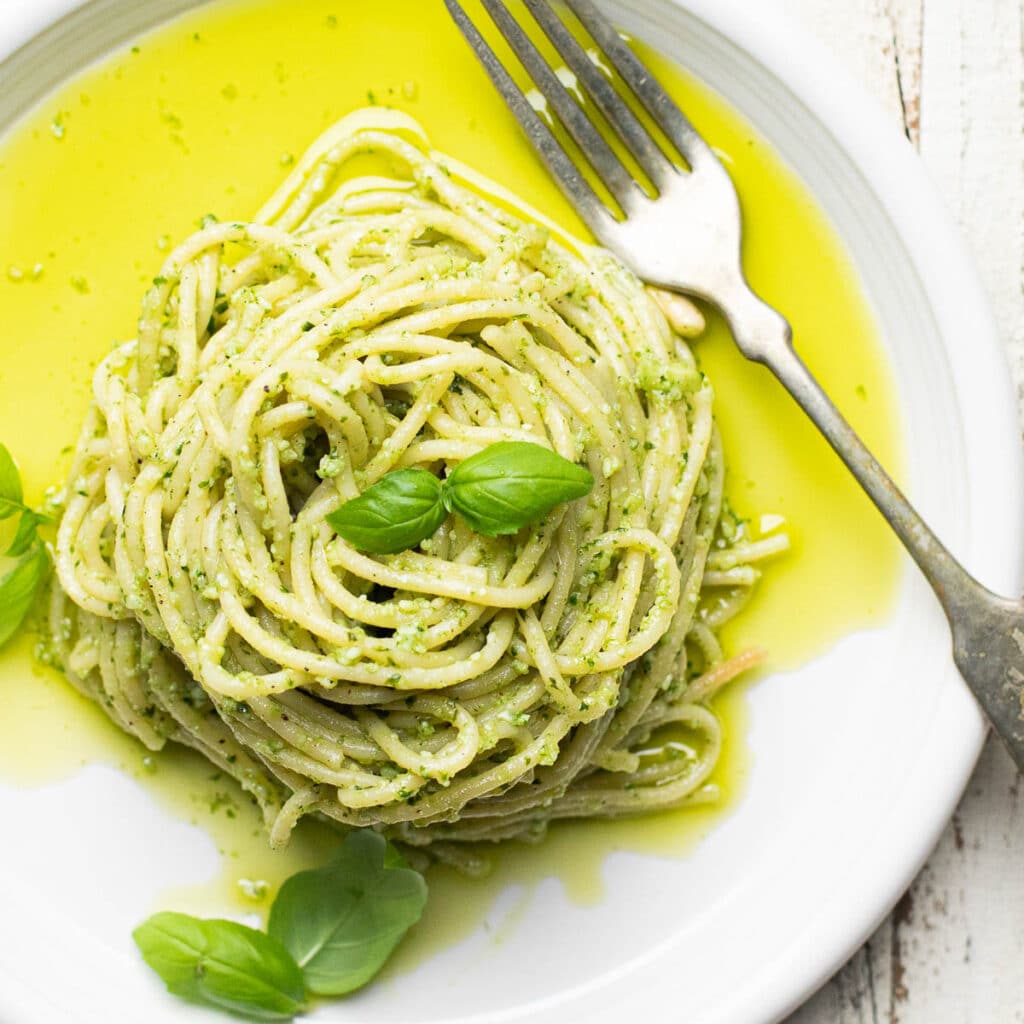
Another great way to freeze pesto sauce is in an ice cube tray. Fill each compartment with pesto sauce until they are frozen. Then, dump all of the pesto cubes into a freezer bag for easy storage. This way, you can cleanly take little bits of pesto sauce out to use.
When you make this pesto sauce recipe, I’d love to hear about it! Drop a rating or leave a comment below. Enjoy!
For more pesto recipes, try these:
- Cheesy Baked Pesto Pasta
- Pesto Ricotta Pappardelle with Burst Tomatoes
- Creamy Tomato Pesto Pasta
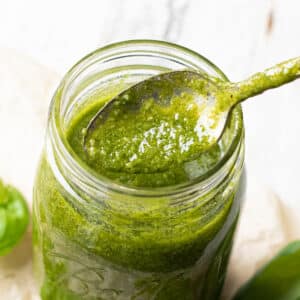
Best Ever Homemade Basil Pesto Sauce (Easy Recipe)
Ingredients
- 2 cups fresh basil loosely packed
- 1/2 cup Parmesan cheese
- 2 cloves garlic minced
- 3/4 cup extra virgin olive oil
- 1 1/2 tsp. salt
- 1/4 tsp. pepper
- 1 Tbsp. pine nuts
Instructions
- Rinse and dry the basil leaves.
- Place all ingredients into a blender or food processor. Puree until smooth.


Sounds delicious. How long does it last in the refrigerator and can it be frozen in containers? Love your recipes.
Hi Susan,
When sealed tightly in a plastic or glass container, it will last a week or two in the fridge. You can also freeze it for sure. There are freezing instructions if you scroll to the bottom of the post, just before the recipe card. Hope this helps 🙂